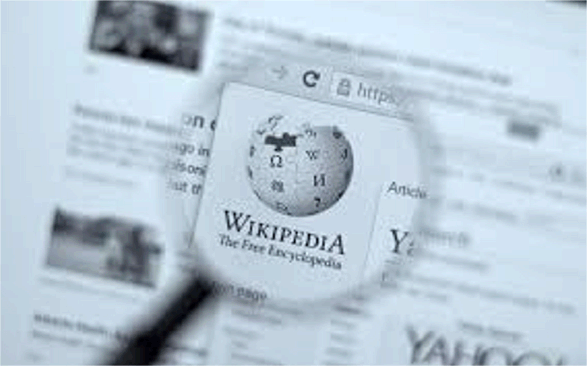인간의 유해와 같은 것을 달에 보내는 것의 윤리적, 법적 의미
ABC RN /
소피 케스티븐(Sophie Kesteven)
어제 오전 8시에 게시됨, 20시간 전 20시간 전에 업데이트됨
모뉴먼트 밸리 나바호 부족 공원 위로 보름달이 떠오른다
나바호족은 달을 신성한 곳으로 여깁니다. (게티: 토니 사비노)
올해 초 미국의 상업용 우주선이 달 착륙을 시도했을 때 아메리카 원주민 나바호족은 깊은 인상을 받지 못했습니다.
사실 그들은 전적으로 반대했습니다.
이는 Astrobotic Technology의 Peregrine Mission 1 달 착륙선이 인간 DNA와 화장된 유해가 포함된 66개의 기념 캡슐을 포함하는 비과학적인 탑재물도 운반하고 있었기 때문입니다.
페이로드는 임무에서 데이터를 수집하기 위한 과학적 목적으로 주로 사용되는 우주선에 탑재되는 항목입니다.
그러나 점점 더 많은 상업 사업자가 하늘로 날아오르면서 항상 그런 것은 아닙니다.
예를 들어, Peregrine을 사용하면 작은 용기에 미화 500달러를 기꺼이 지불할 의사가 있는 사람들은 재를 포함하여 자신이 좋아하는 거의 모든 것을 채울 수 있습니다.
그러나 달 착륙선은 연료 누출로 인해 달에 도달하지 못하고 불덩이처럼 다시 지구로 떨어졌습니다.
벽에 성조기가 걸린 방 안의 우주선
페레그린 달 착륙선은 달에 도달하지 못했습니다. (AP: Jordan K Reynolds/Astrobiotic Technology)
5개의 과학 탑재체를 페레그린에 탑재한 NASA가 달을 신성시하는 나바호 국가(Navajo Nation)를 뒤흔드는 데 관여한 것은 이번이 처음이 아닙니다.
이 경우 유골을 달로 가져가는 것은 상업 운영자였지만, 1999년에는 NASA의 Lunar Prospector 우주 탐사선에 의해 점성 지질학 창시자 Gene Shoemaker의 유골이 그곳으로 보내졌습니다.
당시 나바호 민족은 슈메이커의 유골을 달에 보내는 것에 반대했지만 아무런 조치도 취하지 않았습니다. 슈메이커의 유골은 오늘날까지도 그곳에 묻혀 있는 유일한 유골입니다.
그러나 점점 더 많은 상업 사업자가 우주 탐사에 나서면서 나바호 민족과 같은 원주민이나 다른 사람이 달에 물품을 보내는 것을 반대할 법적 근거가 있습니까?
상업 사업자의 합병증
애들레이드 대학의 우주법 교수인 멜리사 드 즈와트는 현재 재가 달로 보내지는 것을 막을 법적 근거가 없다고 말했습니다.
드 츠바르트 교수는 1999년 사건에 대해 “NASA는 앞으로 그런 일이 있을 경우 협의를 하기로 동의했다”고 말했다.
“물론 이곳은 NASA가 아니기 때문에 민간 사업자입니다.”
긴 금발 머리에 오렌지색 배경 앞에서 안경을 쓰고 있는 중년 여성
멜리사 드 즈와트(Melissa de Zwart) 교수는 달에 보낼 수 있는 물질을 결정하는 국제법과 국내법이 있다고 말했습니다. (제공)
NASA의 Commercial Lunar Payload Services 관리자인 Chris Culbert도 1월에 이와 같은 말을 했습니다.
Culbert 씨는 Peregrine을 조종한 Astrobotic Technology에 대해 “이것은 상업적 임무입니다. 우리는 그들이 날 수 있는 것과 날 수 없는 것을 말할 수 있는 틀이 없습니다”라고 말했습니다.
“상업적 임무에 대한 승인 절차는 NASA를 통해 진행되지 않습니다. 나는 그것이 FAA(연방 항공국)를 통해 진행된다고 생각하며, 미국 정부가 적용하려는 지침이 있다면 그 과정을 거칠 것입니다.”
그러나 드 츠바르트 교수는 “우주 환경을 이용할 때 사람과 하늘과의 연결에 주목하는 것이 중요하다”고 말했다.
“우리는 천문학자들에게 다양한 종류의 효과를 만들어내는 밤하늘 관찰을 방해하는 저궤도 위성에 대해서도 비슷한 반대 의견을 제기하고 있습니다.”라고 그녀는 설명합니다.
무료 ABC 청취 앱에서 좋아하는 프로그램을 스트리밍하세요
칼 박사는 무료 팟캐스트, 라디오, 음악, 뉴스, 오디오북을 위한 최고의 앱을 알고 있습니다. 과학자가 될 필요도 없이 앱을 찾을 수 있습니다!
분홍색 배경에 Listen 앱 로고가 있는 Dr Karl의 이미지
더 읽어보세요
“그래서 우리가 보는 바와 같이 달, 우주 및 하늘과의 우리의 관계는 이러한 관행으로 인해 점점 더 방해를 받고 있습니다. 따라서 이러한 것들에 대해 더 큰 협의가 필요합니다.”
과거에는 우주법이 오염, 잔해, 생명 탐지 방해 등의 문제를 다루었다고 그녀는 말했습니다.
“전통적으로 원주민과 다른 사람들의 환경과의 관계를 고려하지 않았습니다. 따라서 달의 환경 문제 전체는… 우리가 더 많은 연구를 해야 할 부분입니다.”라고 그녀는 말합니다.
그리고 우주 탐사가 더욱 민영화됨에 따라 이와 같은 문제는 계속해서 발생할 가능성이 높습니다.
“의심할 여지없이 우리는 달이나 잠재적으로 다른 곳으로 가는 모든 종류의 다양한 페이로드를 보유한 훨씬 더 많은 상업 사업자를 보게 될 것입니다.”라고 그녀는 말합니다.
오염 및 잔해
우주는 흔히 서부 개척 시대로 묘사되지만 이는 사실이 아니라고 드 즈바르트(de Zwart) 교수는 말합니다.
“우주법이 많이 있습니다. 기본적으로 우리에게는 국제 우주법이 있습니다. 그 기본 문서는 우주 조약입니다.”라고 그녀는 말합니다.
호주에는 국내 우주법이 있는데, 이는 암호화되어 있습니다.
우주(발사 및 반환)법에서.
따라서 호주 상용 사업자가 해외 발사에 페이로드를 탑재하려는 경우 이를 위해서는 호주 우주국의 라이센스가 필요합니다.
“그러나 복잡성이 발생하는 곳은 상황이 잘못되거나 위험할 수 있는 곳을 예상하는 것입니다.”라고 그녀는 말합니다.
“지금까지 라이센스는 실제로 국가 안보와 관련이 있었습니다. 즉, 페이로드에 대량 살상 무기가 없고 페이로드 자체가 안전한지 확인하는 것이었습니다. 그래서 우리는 다른 것에 대해 걱정할 필요가 없었습니다. 것들.”
별을 희생하다
수천 년 동안 인간은 밤하늘의 경이로움을 올려다봤습니다. 그러나 우리가 볼 수 있는 것은 연결에 대한 탐구로 인해 빠르게 변화하고 있습니다.
수백 개의 물체가 지구를 공전하는 애니메이션입니다.
더 읽어보세요
안전하지 않거나 국익에 부합하지 않는 것으로 판단되면 호주 우주국은 탑재체 허가나 발사 허가를 거부할 수 있다고 드 즈워트 교수는 말했습니다.
그리고 위험한 물질이나 오염 물질을 달에 보냈다면 그것을 발사한 나라에서 다뤄야 할 문제일 것이다.
드 츠바르트(de Zwart) 교수는 2019년 이스라엘 상업 운영자가 달에 불시착한 후 소란을 일으킨 잠재적인 오염 사례를 지적합니다.
그녀는 제본에 완보동물(물곰이라고도 알려짐)이 들어 있는 책이 실려 있었다고 설명했습니다.
“[그것은] 이 믿을 수 없을 정도로 강인한 생물이 달 표면에서 살아남을 수 있는지 알아보기 위한 것이었습니다. 그리고 다시 거기에서 ‘글쎄, 그건 허가되지 않았고, 허가되지 않았습니다’라고 말하는 외침이 있었고, 그것이 책임이 있는지 아닌지에 대해 많은 논의가 있었습니다.
“그래서 우리는 사람들이 어떤 종류의 물건을 달에 보내고 싶은지에 대해 훨씬 더 측면적으로 생각하게 되었습니다.”
환경 보호
스페인 그라나다에서 밤에 맑은 하늘을 배경으로 달의 클로즈업.
우주 탐사가 증가함에 따라 de Zwart 교수는 더 많은 환경 보호 조치가 시행되기를 원합니다.(Getty: LeonardoFernndezLzaro)
인간을 우주로 보낼 때 발생하는 또 다른 문제는 인간 잔해를 처리하는 것입니다.
이것이 바로 de Zwart 교수가 우주 탐사와 관련된 환경법에 대해 더 많은 사람들이 생각하기를 원하는 이유입니다.
그녀는 NASA의 아르테미스 프로그램의 일환으로 사람들이 달로 돌아갈 계획을 지적합니다. 호주는 사람들이 달에 살면서 물과 같은 자원을 추출하고 사용하는 등의 활동을 수행하는 것을 볼 수 있는 다자간 협약의 일부입니다.
중국이 주도하고 러시아 및 기타 여러 국가와 유사한 프로젝트가 진행 중입니다.
“우리는 달에 더 많은 사람과 로봇이 있을 것이라는 것을 알고 있습니다. 그래서 더 많은 일이 있을 것입니다. 그리고 물론 인간이 가는 곳마다 쓰레기가 만들어진다는 것도 알고 있습니다.
“우리는 이제 어떤 종류의 환경 보호가 달과 관련이 있는지에 대한 논의를 시작해야 합니다.”
이미 달에는 탐사선, 골프공, 배설물 봉지, 우주 비행사의 개인 기념품이 남겨져 있습니다.
때때로 사람들은 달에 가는 것이 너무 어렵다고 생각하기 때문에 달에 가는 것에 대해 이야기하고 싶어하지 않는다고 그녀는 말합니다.
“제 생각에 우리는 그것을 넘어서 우주로 갈 때 여기 지구에서 했던 것보다 어떻게 환경적으로 더 나은 일을 할 수 있을까요?”
“환경 지속 가능성과 책임 있는 행동 측면에서 우리는 어떤 교훈을 얻을 수 있습니까? 왜냐하면 우리가 환경을 엉망으로 만드는 또 다른 환경이 되는 것을 원하지 않기 때문입니다.”
받은 편지함의 RN
주간 뉴스레터를 통해 뉴스 주기를 넘어서는 더 많은 이야기를 받아보세요.
귀하의 정보는 ABC 개인정보 수집 정책에 따라 처리됩니다.
이 사이트는 reCAPTCHA로 보호되며 Google 개인정보 보호정책 및 서비스 약관이 적용됩니다.
이메일 주소
당신의 이메일 주소를 입력 해주세요
구독하다
어제 오전 8시에 게시됨, 20시간 전에 업데이트됨
The ethical and legal implications of sending things like human remains to the Moon
Posted Yesterday at 8:00am, updated 20h ago20 hours ago
When a commercial US spacecraft attempted to land on the Moon earlier this year, the Native American Navajo people weren’t impressed.
In fact, they were opposed to it altogether.
This is because the Astrobotic Technology’s Peregrine Mission 1 lunar lander was also carrying non-scientific payloads, which included 66 memorial capsules that contained human DNA and cremated remains.
Payloads are items carried onboard a spacecraft which are predominantly used for scientific purposes to gather data from a mission.
But with more commercial operators taking to the sky, that’s not always the case.
For example, with Peregrine, people who were willing to pay $US500 for a small canister could fill it with almost anything they liked, including ashes.
However, the lunar lander failed to reach the Moon after a fuel leak, and it plunged back down to earth in a fiery ball.
It wasn’t the first time that NASA, which had five scientific payloads onboard the Peregrine, has been involved in upsetting the Navajo Nation, which considers the Moon sacred.
While in this instance it was a commercial operator taking the ashes to the Moon, in 1999, the ashes of astrogeology founder Gene Shoemaker were sent there by NASA’s Lunar Prospector space probe.
At the time, the Navajo Nation lodged an objection against Shoemaker’s ashes being taken to the Moon, yet nothing was done. Shoemaker’s ashes are, to this day, still the only ones buried there.
But as more commercial operators take up space exploration, do Indigenous people like the Navajo Nation or anyone else have legal grounds to object to items being sent to the Moon?
Complications of commercial operators
Melissa de Zwart, who is a professor of Space Law at the University of Adelaide, says currently there are no legal grounds to prevent things like ashes being sent to the Moon.
“NASA agreed to undertake consultation if they did anything like that in the future,” Professor de Zwart says of the 1999 incident.
“But of course, because this is not NASA, this is a private operator.”
Chris Culbert, a NASA manager of Commercial Lunar Payload Services said as much in January.
“These are commercial missions. We don’t have the framework for telling them what they can and can’t fly,” Mr Culbert said of Astrobotic Technology, which piloted Peregrine.
“The approval process doesn’t run through NASA for commercial missions. I believe it runs through the FAA [Federal Aviation Administration], and if there are guidelines that the US government wants to apply, it would come through that process.”
However, Professor de Zwart says that “in using the space environment, it’s important to take notice of people’s connection to the sky”.
“We have similar objections being raised about … low-Earth orbit satellites that interfere with observation of the night sky that create different sorts of effects for astronomers,” she explains.
Stream your favourite shows on the free ABC listen app
“So our relationship to the Moon, to space and to the sky, as we see it, is increasingly being interfered with by these practices. And so there is a need for greater consultation about these things.”
In the past, space laws have addressed issues surrounding contamination, debris and interfering with the detection of life, she says.
“It has not traditionally taken account of First Nations’ and other people’s relationship to that environment. So the whole issue of the environment of the Moon is something that … we need to do more work on,” she says.
And as space exploration becomes more privatised, issues like these will likely continue to arise.
“Without a doubt, we’ll see a lot more commercial operators having all sorts of different payloads that are going to the Moon or potentially to other places,” she says.
Contamination and debris
Space is often described as the Wild West but that is simply not the case, Professor de Zwart says.
“There is a lot of space law. Fundamentally, we have international space law. The primary document of that is the Outer Space Treaty,” she says.
In Australia, we have domestic space law, which is encoded in the Space (Launches and Returns) Act.
So if an Australian commercial operator wanted to put a payload on an overseas launch, they would need a licence from the Australian Space Agency to do that.
“But where the complexity arises is, I suppose, just anticipating … where things might go wrong or be dangerous,” she says.
“Up until now, licensing really has to do with things like national security, to make sure that there’s no weapons of mass destruction on the payload and that the payload itself is kind of safe. So we haven’t really had to worry about other things.”
Sacrificing the stars
If deemed unsafe or not in the national interest, the Australian Space Agency could refuse a payload licence or launch permit, Professor de Zwart says.
And if something dangerous or a contaminant was sent to the Moon, it would be an issue that would need to be dealt with by the country that launched it.
Professor de Zwart points to a case of potential contamination where an Israeli commercial operator caused an uproar after crash landing on the Moon in 2019.
There was a book onboard that had tardigrades (also known as water bears) enclosed in the binding, she explains.
“[That was to] see if these incredibly hardy creatures could survive on the surface of the Moon. And again, there was an outcry there saying, ‘Well, that wasn’t authorised, it wasn’t licensed’, and there was a lot of discussion about whether that was responsible or not to do that.
“So we’ve got people thinking a lot more laterally about what sort of things they might want to send to the Moon.”
Environmental protections
Another problem with sending humans into space is dealing with human debris.
This is why Professor de Zwart wants more people thinking about environmental law regarding space exploration.
She points to plans for people to return to the Moon as part of NASA’s Artemis program. Australia is part of a multilateral arrangement that would see people living on the Moon and undertaking activities like extracting and using resources like water.
There is a similar project led by China with Russia and a number of other states in the works.
“We know there’s going to be a lot more people and robots present on the moon. So there’s going to be a lot more things. And of course, we know that wherever humans go, we create junk.
“We need to start having these discussions now about what sort of environmental protection is relevant to the Moon.”
There are already rovers, golf balls, bags of excrement, and astronauts’ personal mementos left behind on the Moon.
Sometimes people don’t want to talk about going to the Moon because they think it’s too difficult, she says.
“I think we have to move past that and go, OK, how are we going to do better environmentally when we go into space than we have done here on earth?”
“What lessons can we take in terms of environmental sustainability and responsible behaviours … because we don’t want it to be just another environment where we go up and make a mess of it.”
RN in your inbox
Get more stories that go beyond the news cycle with our weekly newsletter.
Your information is being handled in accordance with the ABC Privacy Collection Statement.
This site is protected by reCAPTCHA and the Google Privacy Policy and Terms of Service apply.
Posted Yesterday at 8:00am, updated 20h ago










